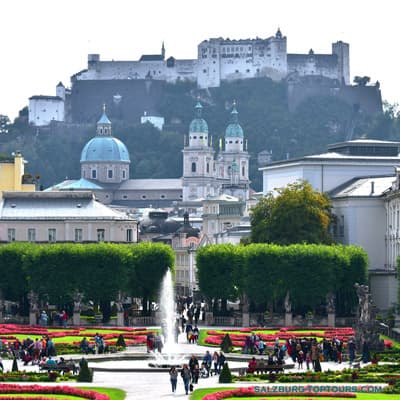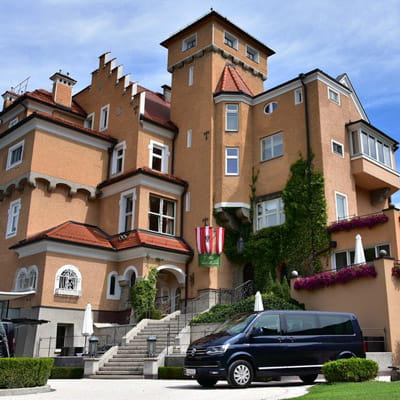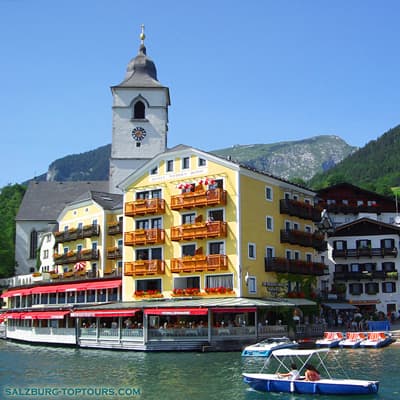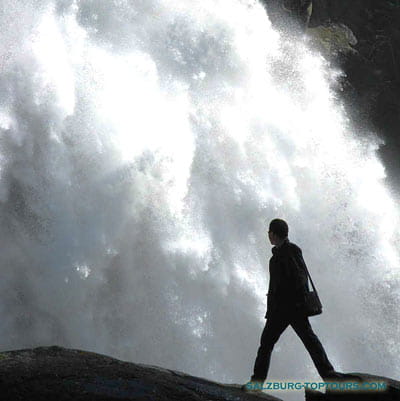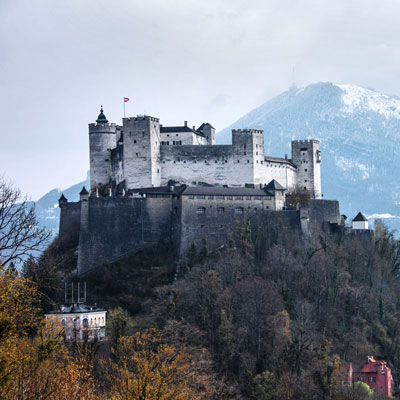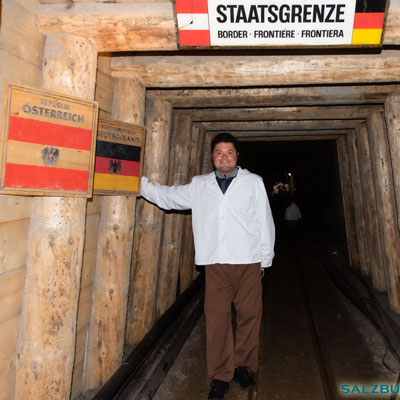Silent Night – Salzburg’s Timeless Christmas Carol
Today, countless Christmas songs fill the air, most written in the 20th century and popularized by modern pop culture. Yet a few beloved melodies have much deeper roots, among them is one of the most cherished of all: Silent Night, Holy Night. Though sung around the world on Christmas Eve, many are unaware that this gentle hymn originated near Salzburg, Austria.

Just 20 kilometers north of Salzburg, in the tranquil Flachgau region—where snow-covered Alpine peaks rise in the distance—lies the small village of Arnsdorf. Steeped in over 1,200 years of history, Arnsdorf is home to Austria’s oldest school still in operation. Today, it hosts just two primary classes, and its upper floor houses a museum dedicated to one of the song’s creators, Franz Xaver Gruber.

The building was initially constructed in 1771 as a residence for the sacristan serving the pilgrimage church of Maria im Mösl. By 1779, it also served as a school, where children and adults alike studied together in three combined classes. The upper floor doubled as the teacher’s living quarters.
When the school’s first teacher passed away, a young Franz Xaver Gruber, just eighteen years old, came to Arnsdorf to take his place. Not long after, he married the widow of his predecessor, thirteen years his senior, and moved into the schoolhouse. Gruber, a gifted musician and composer, soon took over as the organist in the churches of Maria im Mösl and St. Nicholas in Oberndorf bei Salzburg.

In 1817, Father Joseph Mohr joined the parish of Oberndorf. A year earlier, while still serving in the mountain village of Mariapfarr, he had written a touching poem about the birth of Christ, conveying themes of peace, kindness, and hope.
Europe was still reeling from the devastation of the Napoleonic Wars. Poverty was widespread, and the parish could offer little assistance to the needy. Seeking to lift spirits, Mohr offered his poem as a gift to the community. He asked Gruber to set the verses to music, hoping for a song that could bring comfort and faith to the people on Christmas Eve.
Stille Nacht! Heilige Nacht!
Alles schläft; einsam wacht
Nur das traute hochheilige Paar.
Holder Knab' im lockigten Haar,
Schlafe in himmlischer Ruh!
Stille Nacht! Heilige Nacht!
Gottes Sohn, o wie lacht
Lieb' aus deinem göttlichen Mund,
Da uns schlägt die rettende Stund'.
Jesus in deiner Geburt!
Stille Nacht! Heilige Nacht!
Die der Welt Heil gebracht,
Aus des Himmels goldenen Höhn,
Uns der Gnaden Fülle läßt sehn,
Jesum in Menschengestalt!
Stille Nacht! Heilige Nacht!
Wo sich heut alle Macht
Väterlicher Liebe ergoß,
Und als Bruder huldvoll umschloß
Jesus die Völker der Welt!
Stille Nacht! Heilige Nacht!
Lange schon uns bedacht,
Als der Herr vom Grimme befreit
In der Väter urgrauer Zeit
Aller Welt Schonung verhieß!
Stille Nacht! Heilige Nacht!
Hirten erst kundgemacht
Durch der Engel Alleluja,
Tönt es laut bei Ferne und Nah:
"Jesus der Retter ist da!
Legend has it that the organ at St. Nicholas Church had fallen into disrepair; some say mice had chewed through its inner workings, prompting Gruber to compose the melody for guitar accompaniment. On Christmas Eve in 1818, Stille Nacht, Heilige Nacht was performed for the very first time in Oberndorf’s humble church.
Years later, in 1836, the organ builder who had repaired the church’s instrument took a forgotten copy of the song with him. The melody entered the repertoire of Tyrolean folk ensembles, including the famed Zillertal singers, who introduced it on their international tours.
Over time, the song was assumed to be anonymous folk music. Only decades later did the world discover the true authors: Joseph Mohr and Franz Xaver Gruber.

In the 1950s and 1960s, the song gained even greater prominence when the Trapp Family Singers, made famous by The Sound of Music, performed Silent Night for American audiences. Since then, the hymn has been translated into over 300 languages.
Silent night! Holy night!
All is calm, all is bright
round yon virgin mother and child!
Holy infant, so tender and mild,
sleep in heavenly peace,
sleep in heavenly peace.
Silent night! Holy night!
Shepherds quake at the sight.
Glories stream from heaven afar,
heav'nly hosts sing, “Alleluia!
Christ the Savior is born!
Christ the Savior is born!”
Silent night! Holy night!
Son of God, love’s pure light
radiant beams from Thy holy face
with the dawn of redeeming grace,
Jesus, Lord, at Thy birth!
Jesus, Lord, at Thy birth!
Silent night! Holy night!
Wondrous star, lend thy light;
with the angels let us sing
"Alleluia" to our King:
“Christ the Savior is born!
Christ the Savior is born.”

In 2018, the beloved carol celebrated its 200th anniversary. A visit to the places where this timeless song was born adds a magical dimension to any trip to Salzburg. I invite you to explore these historic sites and learn more about the extraordinary story of Silent Night, and the two men whose friendship and creativity gave the world a song of enduring peace and hope.
Read more: New Year's Eve in the Old Town of Salzburg, Christmas Traditions and Events in Austria

